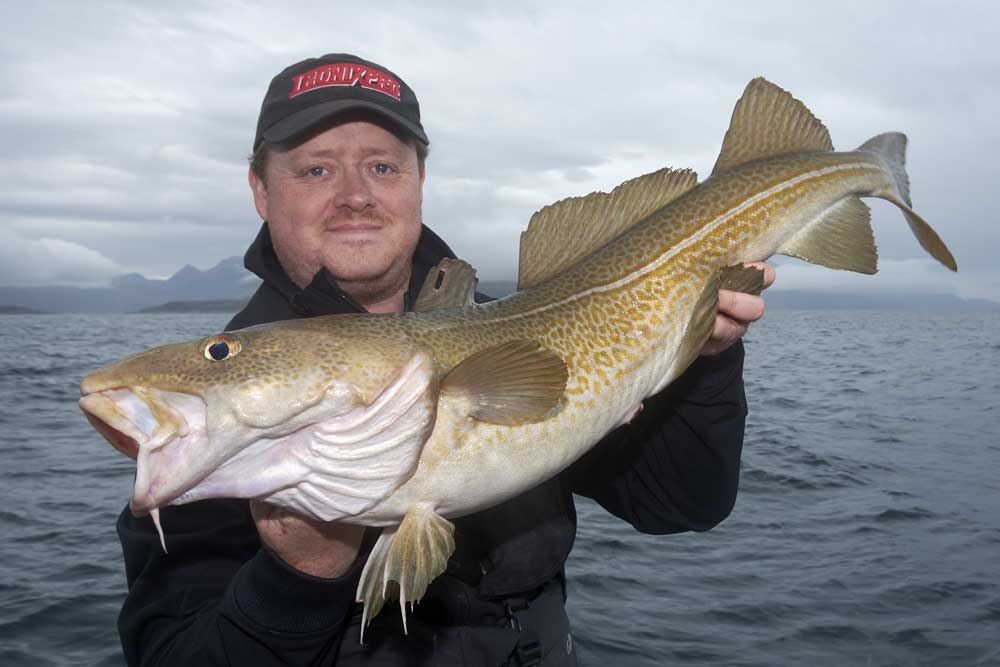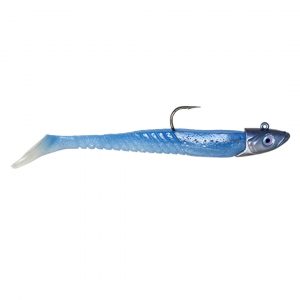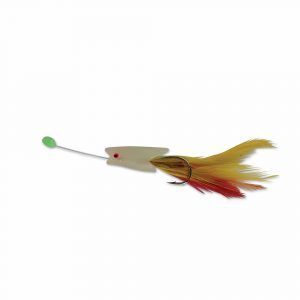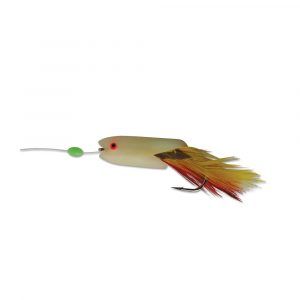In areas where cod work the inshore reefs, great sport can be had fishing artificial lures from boats. These tend to be cod in the 2 to 7lb range, but always with the chance of a bigger, double figure fish. Fish of this size are best targeted with a light tackle approach, as the fish are rarely in more than 100-feet of water.
The Kit You Need article focuses on more conventional tackle setups for boat cod fishing, we’ll cover lighter lure fishing in a separate article later.
Rods
In most cases, a 12/20lb class rod gives the power and action needed, and in some instances a 6/12lb class if plenty. The tip will be slightly supple, but the upper mid-section sees a quick stiffening of the action into a stiff butt. The tip absorbs the initial savage take of the cod, the bulk of the fight is controlled by the mid-section, but when required the stiff butt offers a leverage point to really bully the fish when the rod is in its full fighting curve.
Longer length rods around 8ft are ideal for this, plus they have the length to fish effectively when faced with high safety rails on boats. This length makes it easier to keep fish away from the boat when near the surface and close to landing.
In areas where tidal flow is minimal and at slack water, light lure fishing rods 8 to 9ft in length and rated to cast up to 80g maximise the sport fishing aspect.
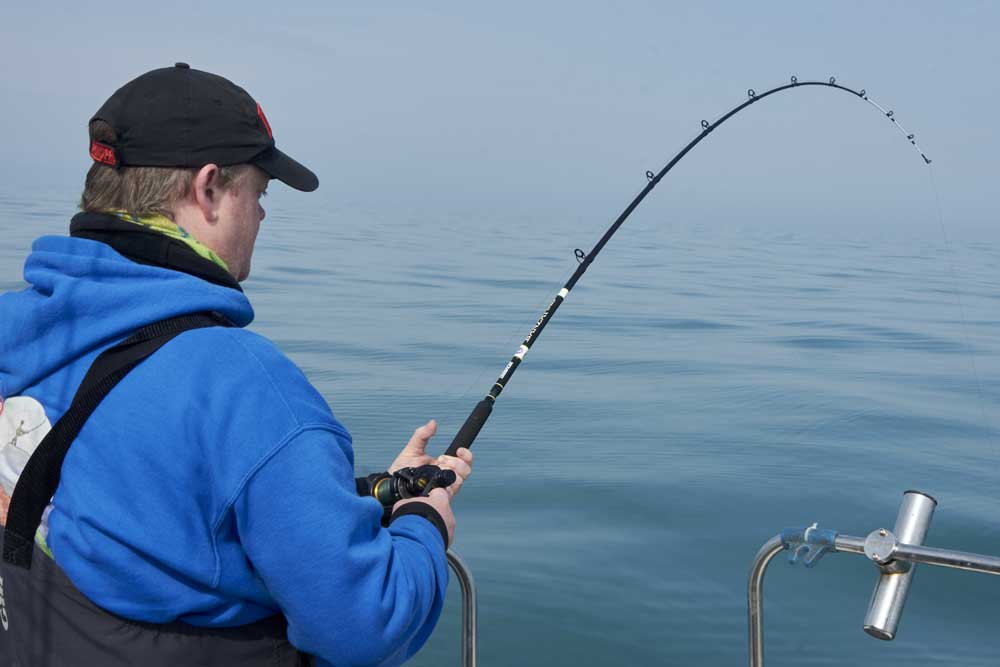
Reels
Small multiplier reels tend to work best with these rods. Reels in the 6500-size range offer a light but powerful combination for fish of this general size. A line capacity around 250-metres of 15lb line is a good guide.
The other option is a 4000/5000 fixed spool reel holding in the region of 300-yards of 20lb braid line plus backing.
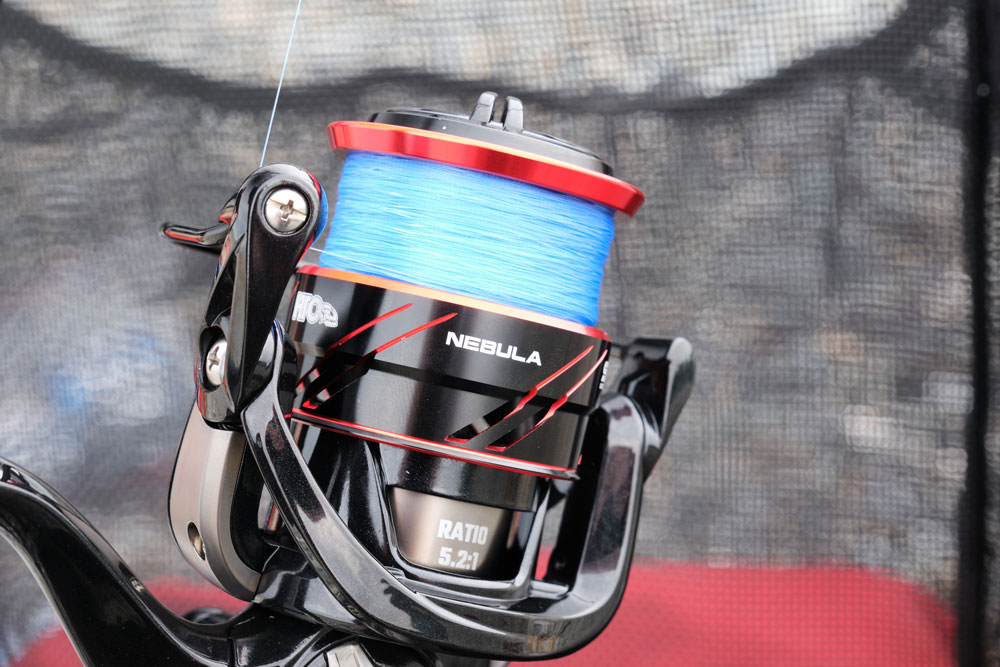
Mainline and Leader
On both reels, braid line is the best choice. It is virtually non-stretch, so you get maximum feel back through the rod. It helps set the hook when the cod takes the lure, plus it offers a thinner diameter than mono of the same breaking strain so catches less tide, enabling you to use a lighter lead weight than you would otherwise.
It does pay to fish a Fluorocarbon shock leader on the end of the braid. This should be about twice the length of the rod. This allows a fish to be brought to the boat side with the leader already on the reel spool for strength. A leader also protects the braid main line from abrasion with rocks and other underwater snags, plus adds a clear line section to hide the braid from the fish in clear water.
For balance, use a 25lb Fluorocarbon leader with 20lb braid main line and 30lb with 30lb braid main line.
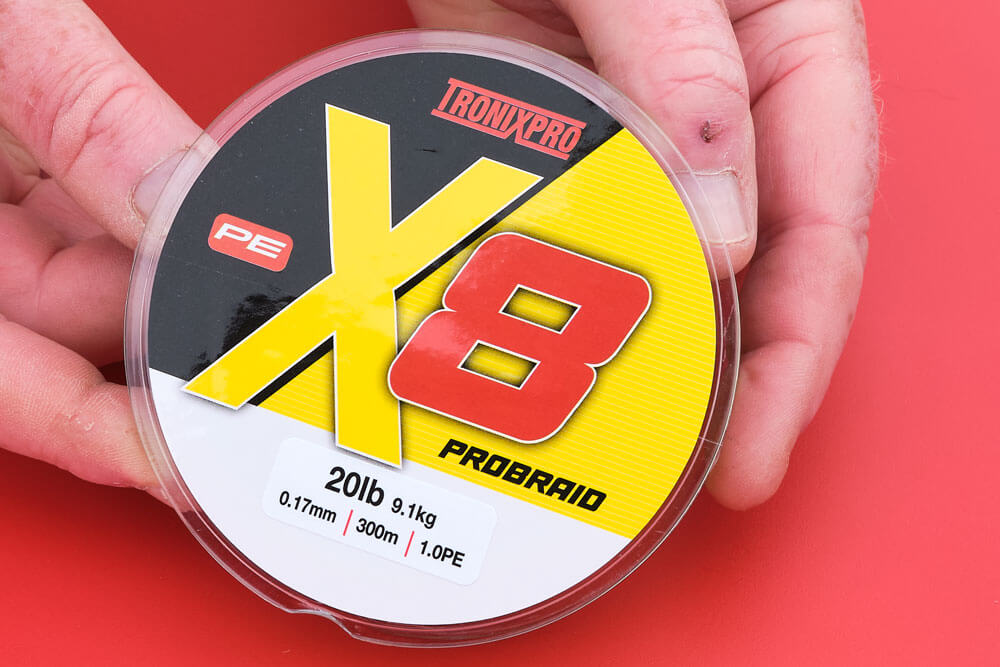
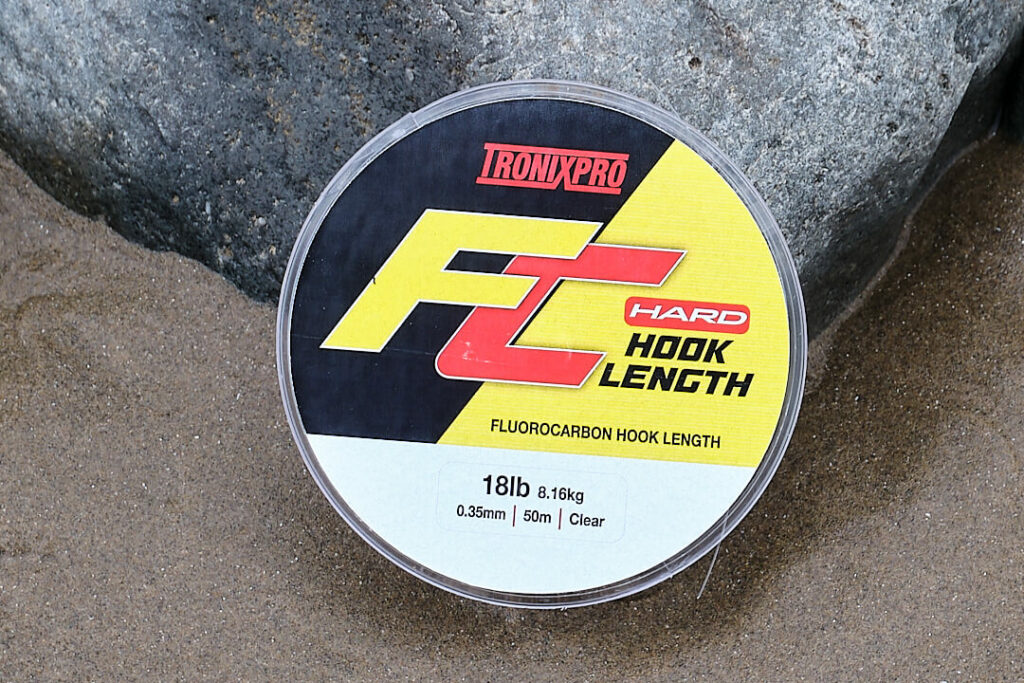
Rigs
The most important factor with any lure rig is that it doesn’t tangle. Rigs that incorporate plastic booms and long traces inevitably will, especially either side of slack water when there is little tidal flow. The Whitby Rig is a rig designed specifically for fishing over reefs for cod with lures and has proved perfect for the job with a minimal chance of tangles but also giving good lure presentation. Plus, it’s basic to tie.
- On to the shock leader, tie on a size 2/0 Interlock Snap Swivel.
- To the same eye of the Snap Swivel tie on 5 to 7-feet of softer 18lb to 25lb Fluorocarbon.
- Add the lead weight to the clip on the Snap Swivel.
- The lure is tied to the free tag end of the Fluorocarbon.
This rig can be used with non-weighted lures, but to virtually eliminate tangles, use it with weighted lures. When the rig and lure descend to the seabed, the lead weight travels first, with the lure above it. Should the lure twist around the leader, when the weight is felt to hit the seabed, if you instantly lift the rod and maybe wind in a few turns on the reel, the weight in the lure sees it travels down past the rising lead weight which unravels any possible tangles.
What’s more, this rig sees the lure fishing well away from the lead weight with maximum movement, resulting in a more natural appearance and presentation.
Lures and Feathers
There are scores and scores of different lures on the market, but the ones to stick to are shad type lures which represent small bait fish such as sprats and other small fish, and sandeel imitators. These are the main prey items of cod working over reef structure.
It’s important to carry a range of different sizes with you. Some days, the fish will be preoccupied with a particular type and size of baitfish. To get the best catches, it’s important to identify the right size of lure to maximise your catches. Lures from 60mm to 150mm will cover most situations.
Equally, the colour of the lure can be important, with other colours often ignored. In clear water with a light sky background, use warmer coloured lures such as white, yellow, and pale green. In either slightly coloured water, or when light levels are low with a dark sky, us black or red, which being darker, give a better silhouette for the fish to see. Black is especially good early and late in the day and in deeper water. White is the one in water less than 50-feet deep in bright sunshine and clear water conditions. This is a guide but experiment on the day to identify what the fish want most.
Simple baited feathers will also work well for reef cod, simply bounced over the seabed. Use feathers with a luminous green body and bait with lugworm or ragworm. Proper feathers work too but are less effective than the lumo bodied type.
Leads
Keep leads as light as you can get away with. Choose a lead just heavy enough to keep you fully in contact with the seabed, but without the line streaming off at a shallow angle in the tide. The right lead weight size is heavy enough to contact the seabed, but when the rod tip is lifted, the lead will lift upwards and then drop back. This allows you to get maximum natural movement into the lure.
In water that carries colour after recent rough weather, use a luminous green, yellow, pink or white coated lead. These can sometimes draw a fish in, which then takes the lure. It’s an edge on days when bites are difficult to come by. Round or ball-shaped leads are good for this as they snag less than conventional weights.
Technique
To work the lure effectively, drop the rig and lure to the seabed. When you feel it touch down, immediately lift the rod tip and begin to retrieve line slowly. Retrieve the lure up in the water for roughly 20-feet, then drop it back and start again. The bulk of the cod will be within 15-feet of the seabed, mostly within just a few feet of it, so don’t waste time retrieving the lure any higher.
An alternative way to fish is to hop the lure. This is done by shortening the hook length to 3 or 4-feet in length. Drop the weight to the seabed and retrieve it upwards about 6-feet. Now, simply repeatedly lift the rod tip up and down so that the lure hops up and down close to the seabed. This is deadly when the cod are very tight to the seabed and often take the bigger fish in the shoal. The cod tend to take the bait as it's dropping back down to the bottom.
In all cases, when cod take the lure, you will feel the rod tip get suddenly heavy then pull hard over as the cod feels the hook and shakes its head. There is no need to strike. Just keep a tight line to the weight of the fish and the hook will set itself.
The fight of a cod is lots of head shaking and downward lunges. They will tire quite quickly in mid-water but be prepared for a last-minute sudden crash dive if the fish is over 5lbs or so.
